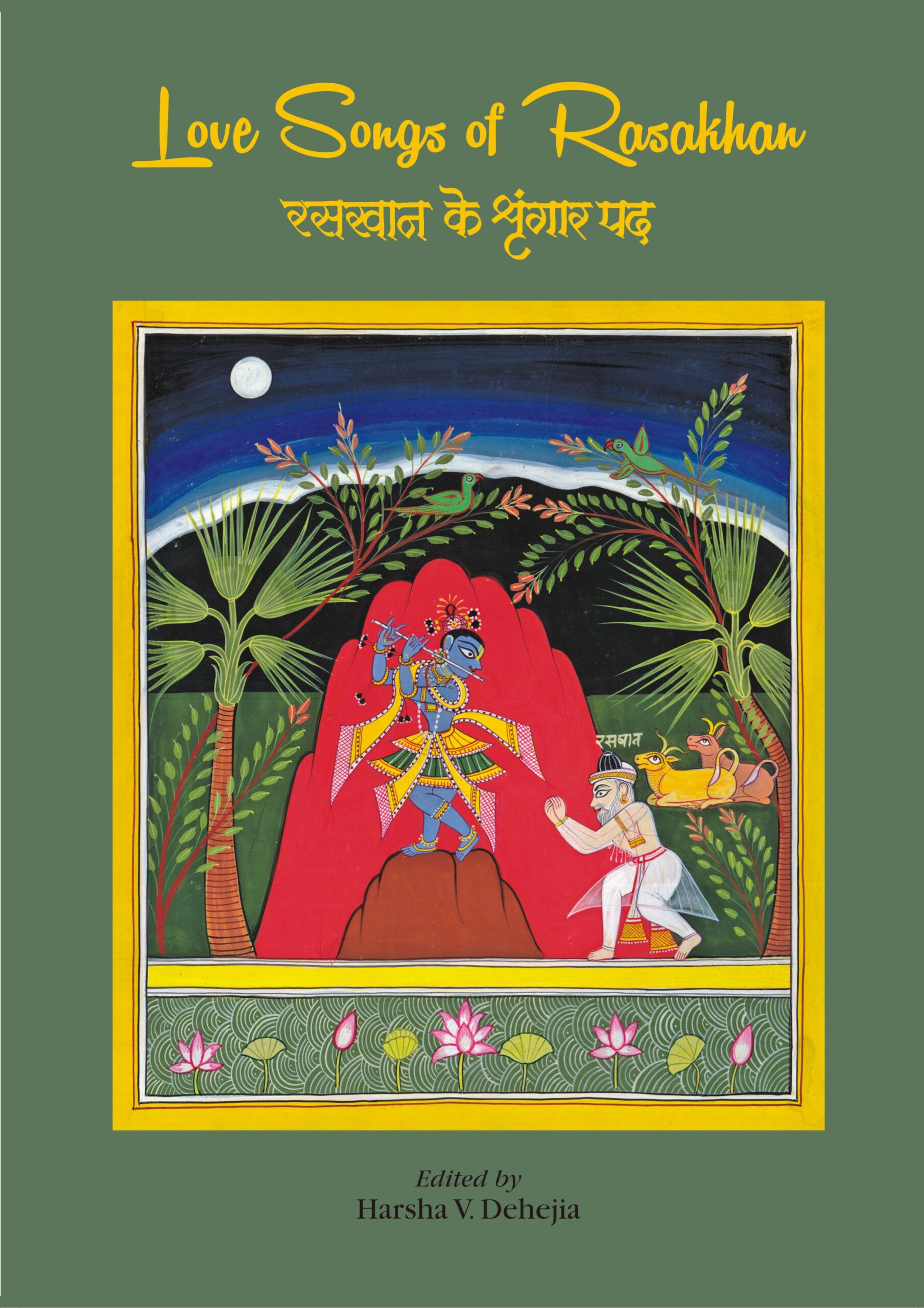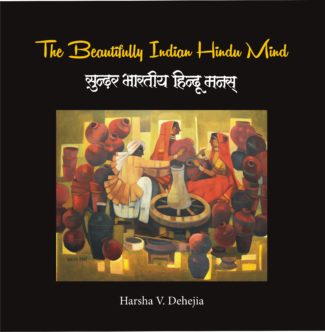Showing all 8 results

This book, translation of ten stories by the famous Gujarati writer Jhaverchand Meghani, reflects the rich folklore culture of both Kathiawad and Saurashtra regions. These stories are of much currency in Gujarat.
The Kathiawad peninsula in Western India boasts a rich heritage of oral traditions. The Charan and Barot communities were especially known for their unique storytelling styles. Jhaverchand Meghani, the author, suggests that much of the main subject matter comes from stories in the Sanskrit epics like Panchatantra and Kathasaritsagar, as also from legends created around historical figures like King Vikram of Ujjain. These orally told stories were handed down from generation to generation, and were further enhanced by each storytellers creativity in injecting elements that would help the story move forward while holding the listeners interest.
This book contains ten stories told in such unique style, collected in the 1920s, and published in Gujarati using the exact words as used by the storytellers. The objective of this English collection has been to preserve the original oral style and content as much as possible in a translation to culturally so different a language form.
The authors two scholarly treatises analyse this storytelling style, and provide a comparison with similar stories from other parts of India as well as the West. The author also draws conclusions of his own about the origins and the spread of these stories. These treatises may be of great interest to students and scholars of folklore, perhaps leading to further research.

It makes one travel through the horrible, fraught and turbulent world of human trafficking wherein innocent children and women are entrapped, sold and forced into flesh trade by a well-knit network of mafia gangs. It also brings into limelight the pity world of hijras, the victims social apathy and prejudice, and their sexual exploitation at the hands of many.
Gulam Mandi revolves around the life of its two protagonists Kalyani and Janki. It makes one travel through the horrible, fraught and turbulent world of human trafficking wherein innocent children and women are entrapped, sold and forced into flesh trade by a well-knit network of mafia gangs. In its quintessential, the story brings forth the myriad colours of human nature hate, rejection, betrayal, apathy, ecstasy, opportunism, pure love, sex, expectation, trust, empathy, hope, rejuvenation and so on.
Kalyani, a beauty queen, fears ageing and childbirth and is jealous of her own young daughter. Janki, who comes from an oppressed class and had a turbulent childhood, faces rejection from a few people, but finds shelter in Kalyani and Gautam, but, of late, destiny plays its tryst with her life. Finally, she finds solace in Mohan.
It portrays the uneven world of the exploitors, who usurp and violate the victims, and the victims who are the sufferers and cannot normally escape the clutches of their perpetrators to rebuild their life. It also brings into limelight the pity world of hijras, the victims social apathy and prejudice, and their sexual exploitation at the hands of many. Here is a clarion call to the society on the ills that it has been afflicted with!
“India is well-known for her cultural and literary traditions, which are normally alien to the West of the twentieth century. Her wide literature is a huge treasure house. So also are her folk tales which showcase her cultural milieu. For generations, the legends of India remained vigorously active by transferring from lip to lip in the absence of any print medium, and this book is an English translation of ninety-three tales selected from a Gujarati volume, “KautukamÀÒÀ” or “Bodhavacana”, which appeared first in 1885. This book is expected to give an insight to the then West into the cultures, customs and traditions of the East through its folk tales. It will promote a larger acquaintance of the West with Indian moorings, resulting in a heartier appreciation of, the native thoughts and native customs, the practical wisdom and ripe experience. It shows considerable skill in shifting and arranging the rude materials collected from many sources and in investigating half-forgotten local chronicles of wit and humour. It also satirizes the faults and extravagances of the then Indian village community to a certain extent. The book should make an interesting and amusing reading for the English-knowing people interested in Indian folklore.”

This volume, while discussing the poetic genius of Banamali, portrays the varied forms of pata paintings, associated with the painters of Puri. Though the Rasalila of Krishna and the gopis is their favourite, the topic of dashavatara is very common in pata painting, displaying a special liking for navagunjara painting.
The heart of Odishan arts lies in the villages of Odisha. The songs and dances, the wall paintings and patachitras, fabrics and textiles, all are rooted in the rural sensibility of Odisha. When its people sing the love songs of Krishna or paint his leelas and kridas, they recreate Vrindavana in their on village square. Krishna sharingara reflects and echoes in each leaf and flower, and song and dance of Odisha. It is more vibrant in the verses of the eighteenth century Banamali Das, who wrote a moving Krishna poetry. He celebrated the many leelas and kridas of Krishna and in doing so he experiences every hue and shade of Krishna shringara. He reminds one of the works of Jayadeva and Vidyapati, and enters the mind and heart of Radha more than any other poet. Grounded on the theology of Chaitanya, he bountifully uses words such as ujjala rasa, mohajana and ashta sakhi, firmly establishing him as part of the Gaudiya tradition.
This volume, while discussing the poetic genius of Banamali, portrays the varied forms of pata paintings, associated with the painters of Puri. Though the Rasalila of Krishna and the gopis is their favourite, the topic of dashavatara is very common in pata painting, displaying a special liking for navagunjara painting. It also contains a conversation with Sujata Mohapatra, an accomplished Odissi dancer, who dances to the compositions of Banamali Das.

Love Songs of Rasakhan is one among the numerous works of medieval Muslim Vaishnava poets. His original name was Said Ibrahim. On seeing a picture of Shrinathji, Said Ibrahim instantly fell in love with Krishna. His love for Krishna made him yearn for a vision of Krishna.
Love Songs of Rasakhan is one among the numerous works of medieval Muslim Vaishnava poets. A sixteenth-century poet, Rasakhan was born in a Pathan Muslim family at Pihani in Uttar Pradesh. His original name was Said Ibrahim. On seeing a picture of Shrinathji, Said Ibrahim instantly fell in love with Krishna. His love for Krishna made him yearn for a vision of Krishna. He stayed with Krishna devotees in Braj, but could not get a vision of Krishna. He unsuccessfully tried his luck at the Gopalpura Shrinathji Temple and finally went to Govindkund and lay there three days without food and water. Pleased, Shrinathji gave him darshan and this made him to move on the Pushtimarg with the guidance of Gosain Vittalnath.
He spent his entire life in Brij composing songs of the many lilas of Radha and Krishna with the pen-name, Rasakhan. Touched by the sensuality of the love of Radha and Krishna, he produced many mellifluous and melodic songs, celebrating their love.
Other than his poetic genuis, this bilingual illustrated volume contains the stories of 252 Vaishnavas, articles on Rasakhan: A Poet and His Poetry; Medieval Muslim Vaishnava Poets; Rasakhan and the Fluidity of Identity; The Mind of Rasakhan; Muslim Vaishnavas of Bengal; and Poets, Painters & Patrons, being Krishnalal Sharma; Narmada Prasad Upadhyaya; Vidya Rao; Harsha V. Dehejia; Sumanta Banerji; and Harsha V. Dehejia as respective authors.

This book is a journey into that charmed and beautiful mind from which has arisen concepts and ideas, forms and textures, words and music, movement and stillness, philosophy and worship. myths and their celebrations.
It is through the Indian aesthetic mind and its concepts of the beautiful that the Indian civilization can be best understood, for in that mind are pages of history and voices of the past, in it will be heard the sounds of our dancers and in it will be seen the colours of our fabrics, it is a mind which treasures the aroma of the earth for in it we shall find terracotta figures that will whisper stories of times gone by. In that ancient mind silent stones will speak of sthapatis who not only built temples but also havelis, in that very mind rivers will whisper of saints who meditated on its banks and also of mountains which will beckon us to caves where truth was discovered, in that pristine mind stars will talk to us of astronomers who counted them, in that radiant mind we will meet scribes who created beautiful manuscripts and painters who immortalised our gathas and kathas through their kalam.
This book is a journey into that charmed and beautiful mind from which has arisen concepts and ideas, forms and textures, words and music, movement and stillness, philosophy and worship. myths and their celebrations.
The book is lavishly illustrated and is a visual delight.
प्रस्तुत पुस्तक मेरे जीवन के बीते हुए चंद अनुभवों, विचारों तथा भावों का, कविताओं, ग़ज़लों तथा अशआर के रूप में एक संकलन है। विभिन्न परिस्थतियों में जन्मे हृदयागार, विभिन्न रंगछटा लिए हुए एक गुल्दस्ते के रूप में आपके समक्ष प्रस्तुत है, इस आशा के साथ कि आप सभी इस पुस्तक को सहर्ष स्वीकार करेंगें।
| There are no products |